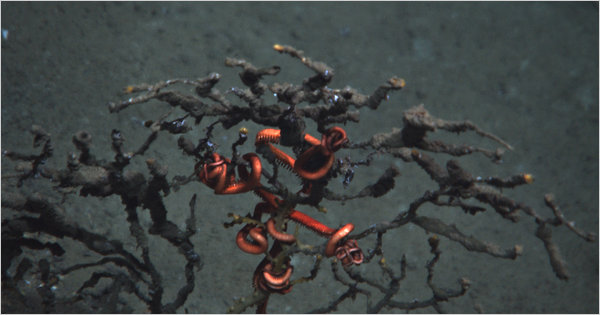Please note: The Academy will close at 3 pm on Thursday, April 18, for Big Bang Gala.
Science News
Dead Coral
November 8, 2010

Researchers aboard a NOAA vessel were “slapped in the face” last week when they discovered dead and damaged coral deep in the Gulf of Mexico about seven miles from the BP oil spill.
The scientists were in the middle of a multi-year expedition studying coral reefs and natural oil seeps in the Gulf. Even after the disaster struck last spring, they never expected to find what they saw via an automated submersible last Tuesday—corals covered with brown material, probably not oil, but likely tissue and sediment caused by something toxic.
According to National Geographic Daily News,
About 90 percent of 40 large groups of severely damaged soft coral were discolored and either dead or dying, the researchers say.
In addition to the coral, Nature News reports that:
The brittle sea stars that commonly intertwine these soft corals, which are normally seen waving their arms, were discolored and immobile.
The coral community resides about 4,500 feet below the surface (about the same depth as the now capped well) and smack-dab in the path of an oil plume spotted last May.
Samples of the coral will now be tested for signs of oil, dispersant, and other materials to determine the exact cause of the damage. The researchers also plan on returning in December for further study at this site and others.
Jane Lubchenco, the administrator of NOAA, had this to say in a statement:
Given the toxic nature of oil and the unprecedented amount of oil spilled, it would be surprising if we did not find damage.
But the chief scientist from the expedition, Charles Fisher from Pennsylvania State University, expressed surprise (as quoted in Nature):
Honestly, we went out there expecting to find subtle effects. I don’t think any of us really expected to be slapped in the face with it like this.
Image credit: Lophelia II 2010, NOAA OER and BOEMRE